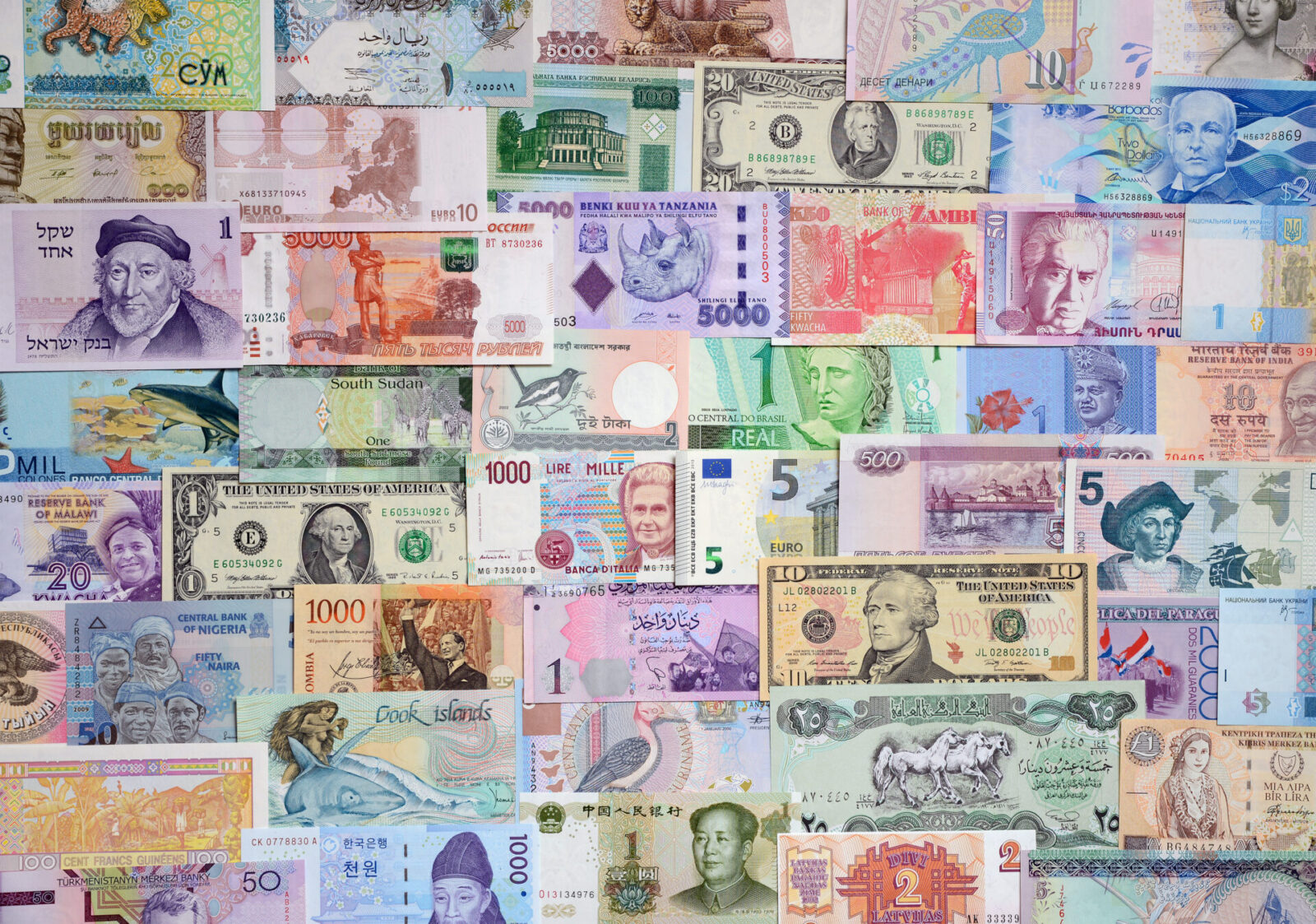
Which currency has been the world's strongest in 2023?
2023 has been another rollercoaster ride for currency watchers. We’ve seen war, inflation and what’s felt like a never-ending debate about central bank rates.
The relative value of currencies tend to rise and fall over time. So, to keep you abreast of all the changes, we’ve compiled a list of the world’s ten strongest currencies.
As the US dollar is the world’s most commonly held reserve currency, we’ll define strength in this article in relative terms to the US dollar. In other words, the world’s strongest currency is the one which performs best against the US dollar.
So, who tops the league table this year?
N.B. All figures are correct at the time of writing. Speak to your Business Trader to see the latest rates.
1. Kuwaiti Dinar (KWD)
As a relatively small Middle East nation, you’d be forgiven for not expecting Kuwait to feature on this list. But in actual fact it sits in first place in 2023, with one Kuwaiti Dinar equivalent to 3.24 US dollars.
Its strength can in many ways be explained by its wealth of natural resources. Kuwait is a leading oil exporter and was a founding member of OPEC.
2. Bahraini Dinar (BHD)
One Bahraini Dinar is worth 2.66 US dollars, making it 2023’s second most valuable currency.
Like Kuwait, Bahrain is a leading oil and gas exporter, but unlike Kuwait its currency is pegged to the US dollar. In practice, this means that the currency tracks changes to the US dollar, so that the differential between BHD/USD remains the same.
3. Omani Rial (OMR)
Just pipped by Bahrain is Oman’s Rial. One Omani Rial buys 2.59 US dollars, although that figure had crept up to 2.61 US dollars earlier this year.
By this point you’ll be familiar with the reasons why Middle East currencies tend to trade well against the dollar, and the same applies to Oman and to a lesser extent our next currency.
4. Jordanian Dinar (JOD)
Jordan is home not just to Petra, but also the world’s fourth strongest currency. This is our first country that isn’t as dependent on oil and gas. That’s not to say commodities aren’t a big part of the Jordanian Dinar’s strength – they certainly are – but they have a much less tangible impact than the first three nations on this list.
One Jordanian Dinar is worth 1.41 US dollars, as it has been since the end of 2017, when the currency was pegged to the US dollar.
5. British Pound (GBP)
Our UK readers will be glad to know the pound still sits close to the top of this list, despite the rollercoaster ride of the previous decade.
While sterling will no longer buy you anything close to as many US dollars as it used to, the current rate of one pound to 1.26 dollars represents a strong recovery from recent lows.
=5. Gibraltar Pound (GIP)
The British overseas territory shares many cultural and economic ties to the UK, so it’s no surprise its currency is tied to the pound. That means it shares the fifth spot with sterling, even if the two currencies are technically separate.
7. Cayman Islands Dollar (KYD)
Next up is another British territory, the Cayman Islands, a financial hub in a tropical setting.
Its currency is tied to the US dollar, with one Cayman Island Dollar buying 1.20 US dollars. The Cayman Islands is well known for its ties to the corporate world, and it attracts interest from some of the wealthiest individuals in the world.
8. Swiss Franc (CHF)
Switzerland is another financial nerve centre, its world-renowned banking prowess and political stability making the Swiss franc a safe-haven currency in times of stress.
One Swiss franc will get you around 1.14 US dollars in currency markets, just ahead of its closest rival in the spot below.
9. Euro (EUR)
Around 340 million people across 20 nations use the euro every day, its adoption across different EU member states making it one of the most unique currencies in circulation.
One euro is worth 1.08 US dollars, although that number has been volatile this year as markets dissect inflation data.
10. US dollar (USD)
In a handy bit of symmetry, the US dollar rounds out our list as the tenth strongest currency in the world.
The American economy has long been the shining light for global growth, with strengths in manufacturing, services and technology. While the rise of China has complicated matters, the US dollar remains immensely powerful, serving as the bedrock for much of the world’s currency reserves.
Let’s check back in a year’s time to see which currencies have moved up or down. With all that’s going on in the world, it’s hard to imagine a scenario free from fluctuations in currency markets. As always, we’re here to help you navigate the changes and understand what they mean for your money.
Sweeping shifts in the economic landscape will inevitably result in volatility. Smart Currency’s goal is to protect your money from market fluctuations through a range of solutions, from market options to forward contracts. Be sure to check out our SmartHedge feature as well, which allows your firm to visualise and adjust its currency exposures in real time.
To make sure your upcoming transactions are protected against the risks of sudden market movements, call your Business Trader on 020 7898 0500 to discuss a forward contract; alternatively, if you’re new, please register with Smart Currency Business today.

 020 7898 0500
020 7898 0500